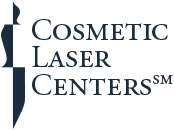
Both Enhance the Appearance Of Your Skin, But There’s More to Consider Before Receiving Treatment
With so many skin treatment options available today, it can be hard to know which one may help you achieve the results you’re looking for.
Modern technology, such as laser and radiofrequency devices, can help improve the tone and texture of your skin. Two of the most common, modern methods are the Fraxel® laser and Morpheus8.
Keep reading to learn more about these two treatment options, so you can make an informed decision and keep your skin looking and feeling its best.
What Is Fraxel® Laser?
The name Fraxel® laser is used to describe both Fraxel® DUAL and Fraxel® re:pair. However, DUAL is non-ablative, meaning it does not remove skin cells, and re:pair is ablative, meaning it does remove skin cells.
Fraxel® DUAL, a fractional laser, resurfaces your skin to treat aesthetic skin concerns, like uneven tone, changes in pigmentation, scars, sun damage, wrinkles, and stretch marks. It treats the targeted zone, leaving the surrounding skin untouched – hence “fractional.” The laser produces thousands of deep microscopic treatment zones, stimulating collagen production. Collagen is a naturally occurring structural protein that keeps your skin youthful and plump.
Fraxel® re:pair is more aggressive than Fraxel® DUAL because it is ablative and requires post-treatment wound care. It also resurfaces your skin and encourages your body’s natural healing process to replace destroyed skin cells with radiant, new ones.
Fraxel® DUAL requires multiple treatment sessions to achieve desired results, but Fraxel® re:pair usually requires just one.
What Is Morpheus 8?
Morpheus8 is a fractional radiofrequency device and microneedling treatment. It delivers fractional radiofrequency energy into the subdermal tissue beneath your skin, penetrating up to four millimeters.
Its microneedles reach various depths and can be adjusted based on your skin care goals. Together with the fractional radiofrequency, the microneedles cause a thermal injury that triggers your body’s natural wound-healing response, including hastening the production of collagen, elastin, and hyaluronic acid. When healed, you can experience the appearance of tighter skin and youthful plumpness.
Most people require one to three Morpheus8 treatments, spaced about four to six weeks apart.
Comparing Fraxel® vs. Morpheus8
Both Are Hyper-Targeted and Fractional
Both Morpheus8 and Fraxel® laser treatments are hyper-targeted – also called fractional – and won’t affect surrounding tissues. Both also stimulate the production of collagen to help your skin feel more youthful, smooth, and tight.
Both Address Similar Skin Concerns
They also both address concerns like fine lines, wrinkles, scars, and hyperpigmentation. They will both require multiple sessions (with the exception of Fraxel® re:pair) to achieve optimal results.
Both Offer Lasting Results
Their results also last for a similar amount of time – a year or more, so you can expect longevity from your new-and-improved skin tone and texture.
Neither Are Replacements For Surgical Facelifts
Although both Fraxel® laser and Morpheus8 can help your skin appear more tight and youthful, neither will achieve dramatic results like an invasive surgical procedure, such as a facelift. However, because both are relatively non-invasive, they can help you achieve your goals if you don’t want to go under the knife.
They Use Different Treatment Mechanisms
Morpheus8 is ablative, like Fraxel® re:pair, but unlike Fraxel® DUAL. Morpheus8 uses radiofrequency, not lasers, to heat the skin’s deeper layers. Fraxel with a wavelength of 1927nm focuses on the top superficial layer of skin. However, Fraxel with a wavelength of 1550nm penetrates more deeply.
Morpheus8’s radiofrequency distributes heat more broadly within the dermis, which can both tighten skin and reduce fat without damaging the outer layer – except for the microneedling component. Morpheus8’s microneedling creates tiny punctures in the skin to allow the radiofrequency energy to penetrate more deeply. Lasers, like Fraxel®, generate heat in focused spots based on the selected wavelengths for skin tightening and resurfacing.
Morpheus8 creates tiny wounds throughout the treatment area because of its microneedles. They typically heal in just a few days. Fraxel® laser patients may experience redness and swelling for about two or three days after treatments.
What Can Go Wrong?
Although Morpheus8 has many benefits, there are a few risks with the treatment if it isn’t customized to your skin or performed correctly.
Some people report that Morpheus8 causes unwanted fat loss in the cheeks, under-eye areas, or temples. This can lead to a sunken appearance. If Morpheus8 goes too deep or is set too high, it can cause visible scarring. Some people, especially those with darker skin tones, may develop post-inflammatory hyperpigmentation from it.
Fraxel® laser can cause redness or swelling, similar to a sunburn. Typically, swelling only lasts a day or two after treatment. Fraxel® can also cause scarring in people prone to keloids, which is why medical providers won’t perform laser skin resurfacing on patients who do not qualify.
FDA Approvals
It wasn’t until July 2024 that the U.S. Food and Drug Administration provided clearance for Morpheus8 for soft-tissue contraction and fractional radiofrequency microneedling.
Fraxel® DUAL, however, has been FDA-approved for much longer, earning clearance in 2013. Fraxel® re:pair received its clearance in 2007. This makes Fraxel® laser treatments more proven technologies than Morpheus8, which has not been in use for as long.
Finding the Right Practitioner
Although both Fraxel and Morpheus8 sound like life-changing skin treatments, technique is just as important as technology. You will only get the best possible results to reach your skin care goals if you choose a reputable and knowledgeable medical provider to deliver them.
Look for a medical practice – not a spa – if you’re considering one of these treatments. A medical provider will examine your skin, talk to you about your goals, and create a customized treatment plan for you.
Disclaimer: This article is for educational purposes only and may discuss services currently unavailable at Cosmetic Laser Centers.
